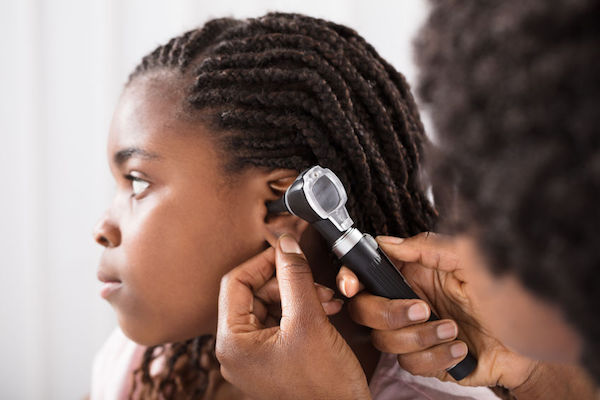An ear infection occurs when the middle ear, which is usually filled with air, becomes filled with fluid.

Ear infections (also known as otitis media) happen when fluid builds up in the space behind the eardrum. Ear infection causes are typically the bacteria or viruses responsible for conditions such as colds and flu, sinusitis as well as smoking, as these can create congestion or swelling in the Eustachian tubes that run from the middle ear to the nasal passages and back of the throat. When the Eustachian tubes are blocked, secretions are unable to drain from the middle ear.
Aside from resulting in inflammation and pain, ear infection can lead to complications such as a ruptured eardrum or, in more serious cases, mastoiditis (infection of the mastoid bone behind the ear).
What are its symptoms?
Ear infection symptoms may come on within days of a cold or any other infection of the upper respiratory tract. They include:
- Ear pain. Signs of pain related to ear infection in babies and children may include pulling at an ear or increased irritability and crying.
- Fever
- Difficulty hearing
- Feelings of pressure inside the ear
- Fluid draining from the ear – an indication that the eardrum has burst. The discharge from the ear may be bloody or it can be thick and yellow in colour
- Loss of balance or dizziness
- Diminished appetite and nausea
- Difficulty sleeping, particularly in children
How is it diagnosed?
In order to reach an ear infection diagnosis, a doctor will use a specialised instrument called an otoscope to examine the eardrum. The otoscope’s light and magnifying lens will reveal if the eardrum is bulging or showing any sign of pressure or redness, as well as if it has perforated.
The otoscope will also be able to reveal if there is any pus-like fluid present – if there is, the healthcare provider may test this to identify the causative organism.
A diagnosis of otis media with effusion means that although there is fluid present in the middle ear, there is no evidence pointing towards infection.
What are your treatment options?
Ear infection treatment will initially be focused primarily on relieving the symptoms, as oftentimes the condition will resolve on its own without further medical intervention or risk of complications. Adopt a wait-and-see approach if pain is mild and temperature is low.
However, an ear infection may require antibiotics if symptoms don’t resolve within a few days. Children who suffer from recurrent ear infections may require the surgical placement of small tubes (grommets) through a slit in the eardrum to assist fluid drainage from the ear. This is a very simple hospital procedure and the child will be able to go home the same day.
Can it be prevented?
Ear infections are usually associated with upper respiratory conditions. This is why avoiding these underlying causes, such as colds or flu, are central to ear infection prevention. This may include cautionary habits such as washing hands frequently or keeping children home from school when they are unwell.
It is also recommended that new mothers breastfeed infants for at least six months if possible, as they can pass antibodies on to the baby that play a role in protecting them from infection. Conversely, a pacifier (dummy) is associated with greater risk of ear infections.
IMAGE CREDIT: 123rf.com
